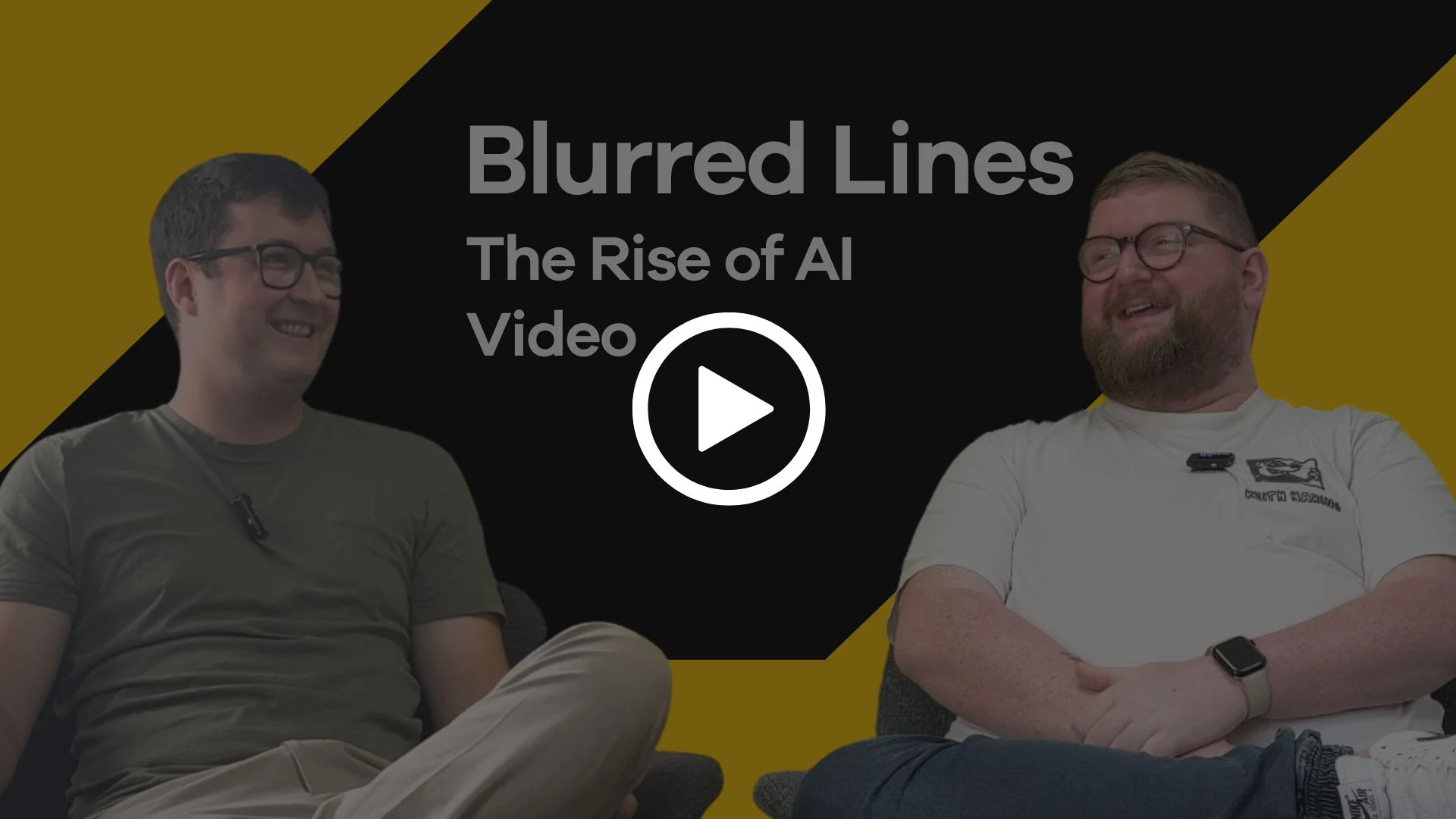
Eyeweb
Unplugged:
Blurred Lines - The Rise of AI Video | Episode 11 | Eyeweb Unplugged
In this episode of our podcast, we sat down with Shaun and Chris to explore the latest advancements in AI video technology and what they mean for marketing and content creation. From lifelike avatars to ultra-fast production tools, we discussed both the exciting opportunities and the challenges these new technologies bring, particularly when it comes to trust and authenticity online.
About the episode
AI Video Marketing - Balancing Innovation with Trust
AI video technology is moving at breakneck speed, and tools like Google Veo3 are redefining what is possible in content creation. In a recent podcast, Shaun and Chris explored not just the potential of these tools, but also the challenges they pose for trust and authenticity online.
The Promise of Lifelike AI
Veo3 can generate eight-second videos in just a couple of minutes, complete with realistic avatars, audio, and scripts. For marketers, this speed is revolutionary. Small businesses and agencies can produce high-quality visuals without expensive production sets, actors, or equipment. Simple prompts can produce professional-looking content, and over time, these clips could even extend into longer, full-production pieces.
When Realism Becomes Risk
The realism of AI videos is both impressive and worrying. At first glance, these clips can appear authentic. To the untrained eye, they might be indistinguishable from real footage. Subtle cues, like perfectly flawless skin, slightly unnatural pauses, or minor background inconsistencies, are often the only indicators that a video is AI-generated. Shaun and Chris noted that this blurring of the line between real and fake can easily mislead viewers, especially when videos are consumed passively on social feeds or in advertisements.
Examples Highlighting the Challenge
Some of the most striking examples discussed in the podcast included a medical advertisement featuring a miraculous pill and a puppy, and a fan-generated Squid Game season 4 trailer. Both videos looked convincing at first glance, professional, complete with dialogue and realistic environments, yet were entirely AI-created. These examples illustrate the potential for AI videos to deceive audiences, particularly older viewers or those unfamiliar with the technology. While the content can entertain or educate, it also underscores the ethical responsibility to maintain transparency and trust.
Ethical Considerations and Regulation
As AI-generated media becomes more convincing, questions around authenticity, consent, and labelling grow increasingly urgent. Unlike stock images or real testimonials, AI can replicate real people’s likenesses in ways that are difficult to control. Shaun and Chris emphasised that while labelling tools are emerging, regulation is lagging, and open-source tools may make it impossible to enforce honesty universally. Education, helping audiences recognise that not everything they see is real, is a critical part of maintaining trust.
Practical Marketing Applications
Despite these concerns, AI videos can offer substantial benefits. For industries with filming restrictions, AI can produce realistic visuals safely and efficiently. Marketing teams can create branded B-roll, hero videos for websites, or short social clips quickly, allowing for creative experimentation without prohibitive costs. Importantly, these tools are most effective when used responsibly, as a supplement to genuine human content, rather than a replacement for it.
Trust Still Matters
AI video is an exciting innovation, but the core principle remains unchanged. Audiences value authenticity. Even the most polished avatars and clever scripts cannot replace the credibility and trust that come from real human interaction. The future might bring more advanced AI tools, but trust and authenticity remain the things that really cut through. And that is something Shaun and Chris both agreed will not change anytime soon.
The Blind Leading the Blind | Episode 12 | Eyeweb Unplugged
In this episode of our podcast, Shaun and Mark dive into the fascinating and sometimes worrying world of AI content creation. They discuss how artificial intelligence is reshaping the internet, from chatbots that invent facts to the growing problem of AI content training on itself. Together, they explore what this means for trust, originality and creativity online, and why human input still matters in a world increasingly run by algorithms.



